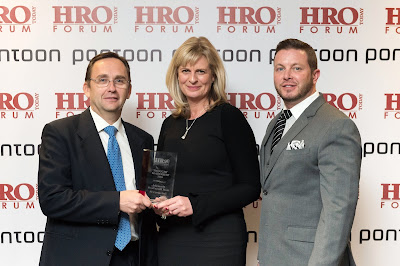Empowering the emotional impact of employee
recognition
I think we
can all agree that employee recognition plays a huge part in the ongoing
success of today’s businesses. Engaging, connecting, and empathizing with your
employees strengthens your relationship with them and helps create a work
culture that fosters greater feelings of being valued, increased productivity,
and enhanced performance for your entire organization. Simply put, by “telling
them,” you create meaningful connections that deliver measurable results. But
how can you maintain authentic, meaningful connections in your employee
recognition program when you have 100, 1,000, or more employees? The answer is technology—technology
that allows you to work in a meaningful, yet effective way.
Emotionally Impactful Enterprise
Effectiveness
Efficiency
in your business’ tools, procedures, methodologies, and processes are key to
enterprise effectiveness for your business. And when it comes to employee
recognition, it’s truly no different.
While
face-to-face communication is the best way to recognize an employee achievement
or milestone, turning to a technological solution doesn’t have to mean losing
warmth or emotion. In fact, technology can make an enterprise-wide recognition program
more authentic and meaningful while being efficient. To do this, it must
deliver speed, service and scalability in the following ways:
Speed—the
ability to recognize, react, and reinforce the employee behaviors and
accomplishments that matter most, when they matter most. Speed in your
recognition program shows that you care enough to make their moment a priority.
Service—Your technology solution’s ability to give the right people in
your organization the right tools to grow the relationships that benefit your
business. By empowering them with resources that give them real-time, reaction
capability, they can respond on the fly and recognize on the go.
Scalability—An employee recognition solution must ideally offer a platform
that is nimble and responsive to the changing needs of your business over time.
The technology needs to provide the consistency, clarity, and control that make
your job easier, your employees happier, and your bottom line the happiest.
A Note on Scalability
Why are
consistency, clarity, and control so important to scalability in an enterprise-wide,
recognition solution? Simple. They preserve the continuity, message, and
security of your brand, mission, and vision.
In short, scalability
ensures your employee recognition solution remains consistent across your
organization in how it’s managed, used, and most importantly, received.
Scalability from
a technology must offer clarity by providing the tracking, measurement, and
reporting a business needs to gauge effective and efficient performance of the
program.
Scalability
helps preserve security when the technology actively administers and monitors a
business’ rules, obligations, and checks and balances in order to maintain
compliance.
Recognize the opportunity
Please don’t
believe that a technology solution can effectively replace the ol’
face-to-face. It can’t and shouldn’t ever happen. People thrive on human
interaction and always will. But, leveraging technology correctly can help your
organization build and strengthen relationships when being together isn’t
possible. Whether it’s because of a physical distance or a logistic issue, a
technology employee recognition solution can fill the gap and ensure a special
moment isn’t missed or delayed when it comes to recognizing and celebrating the
employee responsible. “telling them,” says a lot about you. And when done in a
timely, authentic and sincerely way, it helps your employees and your business
thrive.
Jonathan
McClellan leads the employee recognition business unit at Hallmark Business
Connections, providing strategic leadership and employee enrichment solutions
for Fortune 500 performance-centric businesses.



























